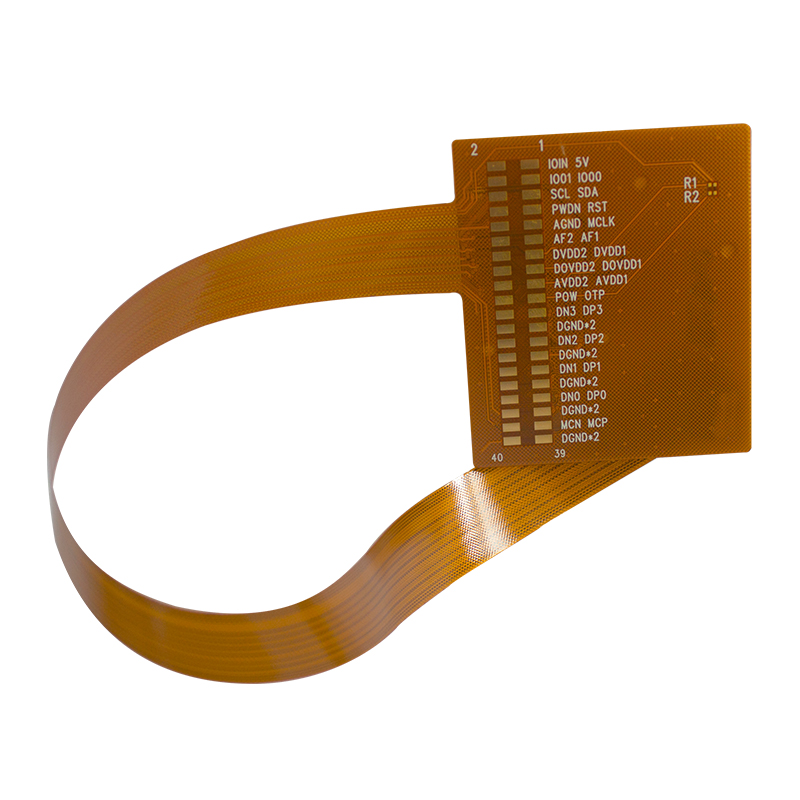In this blog, we will explore the various options available for conductive layers in flexible circuit boards.
Flexible circuit boards, also known as flexible printed circuit boards (PCBs) or flexible electronics, have gained tremendous popularity in recent years due to their unique characteristics and advantages over traditional rigid PCBs. Their ability to bend, twist and bend makes them ideal for a wide range of applications in industries such as automotive, aerospace, healthcare and wearable technology.
One of the key components of a flexible circuit board is its conductive layer. These layers are responsible for transmitting electrical signals and facilitating the flow of electricity throughout the circuit. The selection of conductive materials for these layers plays a critical role in the overall performance and reliability of the flexible PCB.
1. Copper foil:
Copper foil is the most commonly used conductive layer material in flexible circuit boards. It has excellent conductivity, flexibility and durability. Copper foil is available in different thicknesses, typically 12 to 70 microns, allowing designers to select the appropriate thickness based on the specific requirements of their application. The copper foil used in flexible circuit boards is usually treated with an adhesive or bonding agent to ensure strong adhesion to the flexible substrate.
2. Conductive ink:
Conductive ink is another option for creating conductive layers in flexible circuit boards. This ink consists of conductive particles suspended in a liquid medium, such as water or an organic solvent. It can be applied to flexible substrates using a variety of techniques, such as screen printing, inkjet printing or spray coating. Conductive inks also have the added advantage of creating complex circuit patterns that can be customized to meet specific design requirements. However, they may not be as conductive as copper foil and may require additional protective coatings to enhance their durability.
3. Conductive glue:
Conductive adhesives are an alternative to traditional soldering methods for creating conductive layers in flexible circuit boards. These adhesives contain conductive particles, such as silver or carbon, dispersed in a polymer resin. They can be used to bond components directly to flexible substrates, eliminating the need for soldering. Conductive adhesives conduct electricity well and can withstand bending and bending without affecting the performance of the circuit. However, they may have higher resistance levels compared to copper foil, which may affect the overall efficiency of the circuit.
4. Metalized film:
Metalized films, such as aluminum or silver films, can also be used as conductive layers in flexible circuit boards. These films are typically vacuum deposited onto flexible substrates to form a uniform and continuous layer of conductors. Metallized films have excellent electrical conductivity and can be patterned using etching or laser ablation techniques. However, they can have limitations in flexibility because the deposited metal layers can crack or delaminate when repeatedly bent or twisted.
5. Graphene:
Graphene, a single layer of carbon atoms arranged in a hexagonal lattice, is considered a promising material for conductive layers in flexible circuit boards. It has excellent electrical and thermal conductivity, as well as excellent mechanical strength and flexibility. Graphene can be applied to flexible substrates using various methods, such as chemical vapor deposition or inkjet printing. However, the high cost and complexity of graphene production and processing currently limits its widespread adoption in commercial applications.
In summary, there are many options for conductive layers in flexible circuit boards, each with its own advantages and limitations. Copper foil, conductive inks, conductive adhesives, metallized films and graphene all have unique properties and can be customized to the specific requirements of different applications. Designers and manufacturers must carefully evaluate these options and select the most appropriate conductive material based on factors such as electrical performance, durability, flexibility, and cost.
Post time: Sep-21-2023
Back







